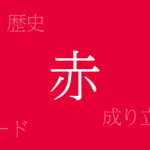Color is a mirror reflecting culture, and among these, the Japanese traditional color “金赤 (きんあか)” has deeply rooted itself in the lives of the Japanese through its long history, symbolizing glamour and passion. This article delves into the allure of Kinaka, exploring its significance, history, and contemporary uses.
About 金赤 (きんあか)
金赤 (きんあか), literally meaning ‘gold red’, is a deep, warm color reminiscent of red with a touch of gold. As a traditional Japanese color, it has been used in high-status occasions, festive costumes, and decorations of temples and shrines, symbolizing richness and strength. When paired with other colors, Kinaka can enhance a luxurious and glittering impression.
History of 金赤
The history of Kinaka dates back to ancient times, with its use evident in murals of tombs and temples from the Nara to the Heian period. During the Heian period, it was favored in the garments of the nobility, particularly in women’s attire where its splendor was pronounced. In the samurai society, Kinaka also held significant importance, used in samurai armor and flags to express bravery and authority.
Color Codes for 金赤
To replicate Kinaka in digital and web design, accurate color codes are essential.
- HEX: #EA5506
- RGB: R:234 G:85 B:6
- CMYK: C:8 M:80 Y:99 K:0
Western Name for 金赤
The western name for Kinaka is ‘Vermilion Gold’. ‘Vermilion’ stands for a vivid red, and ‘Gold’ denotes the golden hue, together representing the color tones of Kinaka. In international design contexts, this name is used to specify this color.
Summary of 金赤
With its rich historical background and deep color richness, Kinaka remains a beloved traditional Japanese color. It is widely utilized in modern fashion, design, and art, conveying the beauty of Japanese tradition to the contemporary era. Using this captivating color can add a unique elegance and warmth to any design or artwork.

























